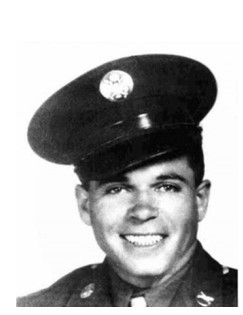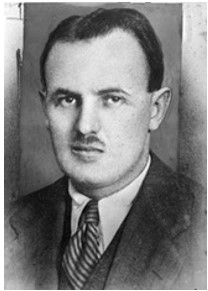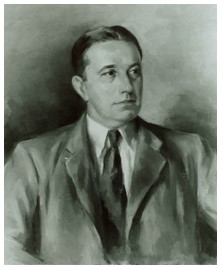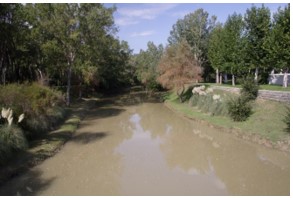Five things you may not know about Florence American Cemetery
Florence American Cemetery is one of two World War II American Battle Monuments Commission cemeteries in Italy. It is located in the Tuscany countryside outside of Florence, Italy.
Eight Native American service members buried at Florence American Cemetery
Eight Native American service members are interred at Florence American Cemetery including Medal of Honor Recipient, Sgt. Roy W. Harmon, a Cherokee from the Eastern Band of Cherokee Indians, who served in Company C, 362nd Infantry Regiment, 91st Infantry Division.
Harmon was born on May 3, 1916. He joined the Army in Pixley, California, and died near Casaglia, Italy, on July 12, 1944.
Medal of Honor citation: “He was an acting squad leader when heavy machine-gun fire from enemy positions, well dug-in on commanding ground and camouflaged by haystacks, stopped his company's advance and pinned down one platoon where it was exposed to almost certain annihilation. Ordered to rescue the beleaguered platoon by neutralizing the German automatic fire, he led his squad forward along a draw to the right of the trapped unit against three key positions which poured murderous fire into his helpless comrades. When within range, his squad fired tracer bullets in an attempt to set fire to the three haystacks which were strung out in a loose line directly to the front, 75, 150, and 250 yards away. Realizing that this attack was ineffective, Sgt. Harmon ordered his squad to hold their position and voluntarily began a one-man assault. Carrying white phosphorus grenades and a submachine gun, he skillfully took advantage of what little cover the terrain afforded and crept to within 25 yards of the first position. He set the haystack afire with a grenade, and when two of the enemy attempted to flee from the inferno, he killed them with his submachine gun. Crawling toward the second machine-gun emplacement, he attracted fire and was wounded; but he continued to advance and destroyed the position with hand grenades, killing the occupants. He then attacked the third machine gun, running to a small knoll, then crawling over ground which offered no concealment or cover. About halfway to his objective, he was again wounded. But he struggled ahead until within 20 yards of the machine-gun nest, where he raised himself to his knees to throw a grenade. He was knocked down by direct enemy fire. With a final, magnificent effort, he again arose, hurled the grenade and fell dead, riddled by bullets. His missile fired the third position, destroying it. Sgt. Harmon's extraordinary heroism, gallantry, and self-sacrifice saved a platoon from being wiped out, and made it possible for his company to advance against powerful enemy resistance.”
Harmon is buried in plot A, row 4, grave 37 at Florence American Cemetery.
The final resting place of the first war correspondent killed during World War II
Ralph Waldo Barnes was born on June 14, 1899, in Salem, Oregon. He was a journalist from the New York Herald Tribune. His first foreign correspondent assignment was in Paris where he interviewed Charles Lindbergh in 1927 after Lindbergh’s first solo transatlantic flight. Barnes then was sent to Rome in 1930 and Moscow in 1931.
Barnes was the first American war correspondent killed during World War II on Nov. 17, 1940. He died when his military plane crashed in a mountain peak in Yugoslavia. Three Royal Air Force crew members also died with him on that day. In 1943, a Liberty ship was christened the SS Ralph Barnes in his honor.
He is buried in plot C, row 5, grave 42 at Florence American Cemetery.
Florence American Cemetery’s architect was a pilot in World War I
James Kellum Smith was a 1915 graduate of Amherst College. He worked for the Gilded Age architectural firm of McKim, Mead and White, served as a pilot in World War I in the Air Service of the United States Army.
Following the war, he received his degree in architecture from the University of Pennsylvania. Smith was also awarded the Rome Prize, a prestigious American architectural fellowship by American Academy in Rome to study there. He also served as President of the American Academy in Rome from 1937 until 1958 and in 1961. He primarily designed academic buildings, but his last major work was the National Museum of American History.
During World War II, Smith was a lieutenant colonel. He was also the lead architect for Florence American Cemetery after the war.
A cemetery over two cities
The Greve River runs through the cemetery splitting the cemetery between two cities: Impruneta and San Casciano Val di Pesa. The Greve is 43-kilometer long and is a central architectural feature of the cemetery.
From the entrance of the site, a bridge going over the river leads to the burial area where the headstones of approximately 4,400 U.S. military dead are arrayed in symmetrical curved rows upon the hillside. Another approximately 1,400 are also commemorated on its wall of the missing.
The fallen represent 39% of the U.S. Fifth Army burials originally made between Rome and the Alps. Most of them died in the fighting that occurred after the capture of Rome in June 1944, included among them are casualties of the heavy fighting in the Apennines Mountains shortly before the war's end.
The home of colonies of rose-ringed parakeet
Colonies of rose-ringed parakeets live at the Florence American cemetery. They escaped from aviaries or were released by private owners in the late 1970s and 1980s, establishing separate breeding colonies in green areas.
These parakeets do not migrate and live here all year round. Unfortunately, they take over territory of other birds indigenous to the area and crowd them out.
Sources:
Florence American Cemetery’s team
ABMC Historical Services
ABMC website and brochures
Roy W Harmon | World War II | U.S. Army | Medal of Honor Recipient (cmohs.org)
Ralph Barnes (journalist) - Wikipedia





